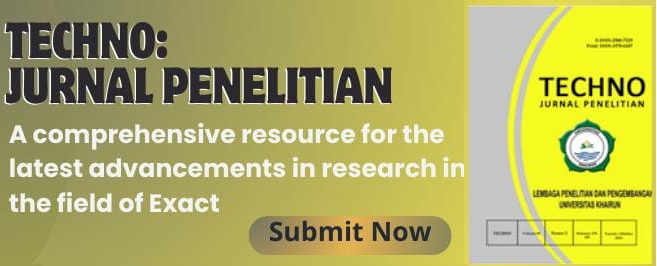Pengetahuan Lokal Masyarakat Kepulauan Tentang Tumbuhan Anti-nyamuk
Abstract
Keywords
Full Text:
PDF (Bahasa Indonesia)References
Abdel-Motagaly, A.M.E., Mohamad H.M., Morsy T.A. 2017. A Mini-Review on Skeeter Syndrome or Large Local Allergy to Mosquito Bites. J Egyptian Soc Parasitol. Vol. 47(2) 415-424.
Boesri, H., Heriyanto B., Susanti L., Handayani S.W. 2015. Uji Repelen (Daya Tolak) Beberapa Ekstrak Tumbuhan Terhadap Gigitan Nyamuk Aedes aegypti Vektor Demam Berdarah Dengue. Vektora. 7 (2): 79 - 84
Bekele, D. 2018. Review on insecticidal and repellent activity of plant products for malaria mosquito control. Biomed Res Reviews. 2(2): 1-7
Chalannavar, R.K., Hurinanthan V., Singh A., Venugopala, K.N., Gleiser R.M., Baijnath H., Odhav B. 2013. The antimosquito properties of extracts from flowering plants in South Africa. Tropical Biomed. 30(4): 559–569.
Harborne, J.B. 1987. Metode Fitokimia, Edisi ke dua. ITB, Bandung.
Kantheti, P., Padma A. 2017. Ethnobotanical tribal practices for mosquito repellency followed by people of north India. J Pharm Phytochem. 6(6): 942-494
Kausar, M.A. 2018. A review on Respiratory allergy caused by insects. Bioinformation 14(9): 540-553
Maia, M.F., Moore S.J. 2011. Plant-based insect repellents: a review of their efficacy, development and testing. Malaria J. 10(1) : 1-15
Pichersky, E., Gershenzon J. 2002. The formation and function of plant volatiles: perfumes for pollinator attraction and defense. Curr Opinion Plant Biol. 5:237-243.
Qiu, H., Jun H.W., McCall J.W. 1998. Pharmacokinetics, formulation, and safety of insect repellent, N,Ndiethyl-3-methylbenzamide (deet): a review. J Am Mosq Control Assoc 14:12–27
Raina. 2011. Ensiklopedi Tanaman Obat untuk kesehatan. Cetakan 1. Yogyakarta Absolut.
Rialita, T., Rahayu W.P., Nuraida L., Nurtama B. 2015. Aktivitas antimikroba minyak esensial jahe merah (Zingiber officinale var. Rubrum) dan lengkuas merah (Alpinia purpurata K. Schum) terhadap bakteri patogen dan perusak pangan. J AGRITECH. 35(1):43-52.
Shankar, B.S., Saravanan T, Ragavi M, Kaviya G, Anushree A, Samraj DA, Tennyson S. 2013. Screening of Local Plants for Their Repellent Activity against Mosquitoes (Diptera: Culicidae). J Mosquito Res. Vol.3(14): 97-104.
Taher, D.M., Nurhasanah, Papuangan N. 2015. Potensi cengkeh (Syzygium aromaticum) varietas Afo sebagai larvasida alami nyamuk Anopheles subpictus dan Aedes aegypti. Masyarakat Biodiversitas Indonesia, PROS SEM NAS MASY BIODIV INDON. 1(6): 1478-1482
Taher, D.M., Solihin D.D., Cahyaningsih U., Sugita P. 2019. Chemical Components Analysis Of Clove (Syzygium aromaticum (L). Merr. & Perry). Global Science J. 7 (4)
Tefera, B.N., Kim Y.D. 2019. Ethnobotanical study of medicinal plants used as antimalarial and repellent by Sidama people of Hawassa Zuria district, Southern Ethiopia. J Complement Med Res. Vol 10 (1) : 13-26
Youmsi, R.D.F., Fokou P.V.T., Menkem E.Z., Bakarnga-Via I., Keumoe R., Nana V., Boyom F.F. Ethnobotanical survey of medicinal plants used as insects repellents in six malaria endemic localities of Cameroon. J Ethnobiol etnomed. 13 (33): 1-14
DOI: https://doi.org/10.33387/tjp.v9i1.1544
Refbacks
- There are currently no refbacks.
Copyright (c) 2020 TECHNO: Jurnal Penelitian

This work is licensed under a Creative Commons Attribution-NonCommercial 4.0 International License.
-------------------------------------------------------------------------------------------------------------------------------------------------------------------
-------------------------------------------------------------------------------------------------------------------------------------------------------------------
TECHNO: Jurnal Penelitian
Published by: LPPM Universitas Khairun
Addres : Jalan Yusuf Abdurrahman Kampus II Unkhair, Kelurahan Gambesi, 97722 Kecamatan Kota Ternate Selatan, Provinsi Maluku Utara, Email: techno@unkhair.ac.id | URL: http://ejournal.unkhair.ac.id/index.php/Techno
Techno Jurnal Penelitian is licensed under a Creative Commons Attribution-NonCommercial 4.0 International License.






























